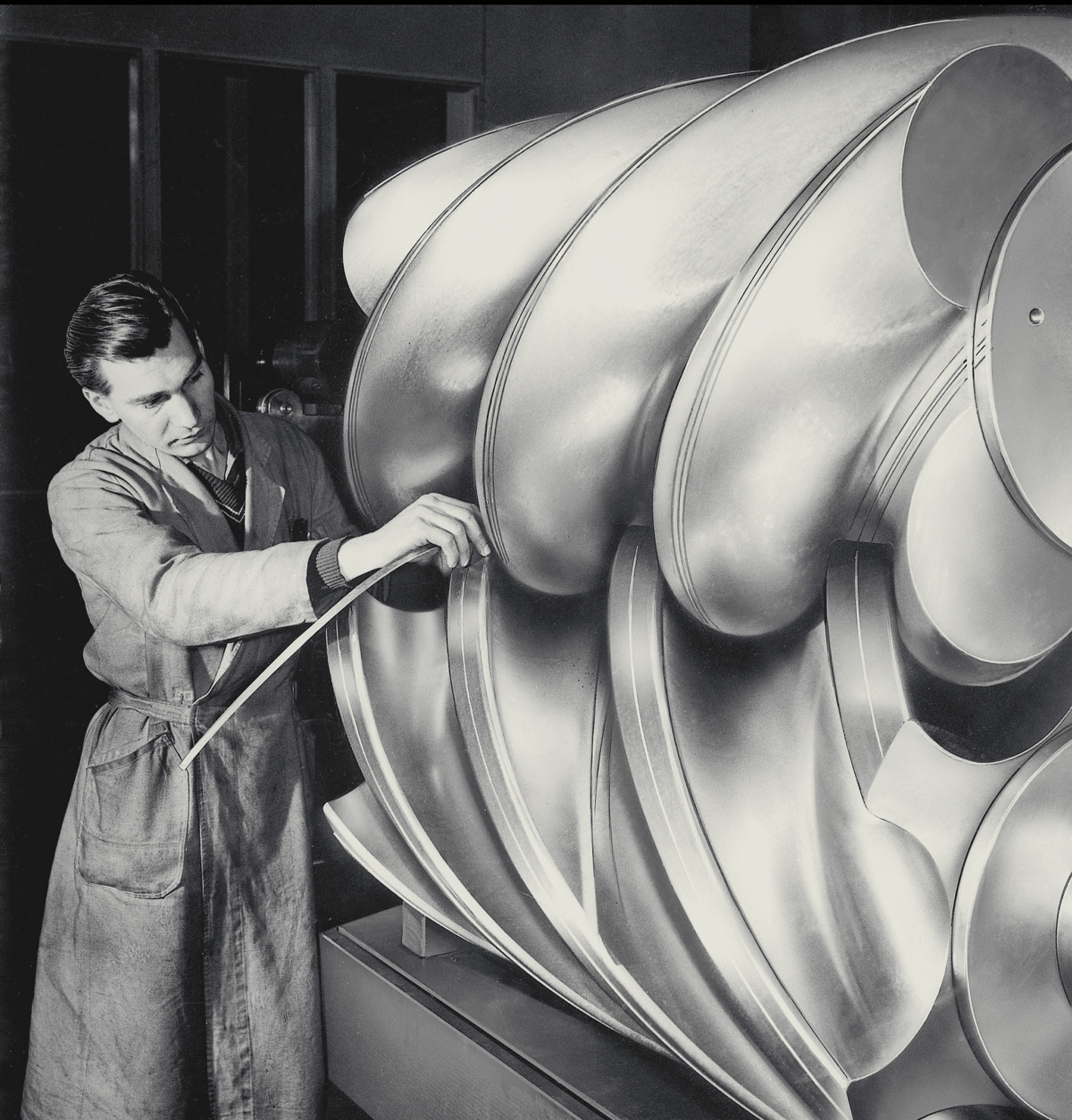
Atlas Copco, founded in Stockholm in 1873, today celebrates its 150-year anniversary. During a century and a half, Atlas Copco has been driving development and delivering breakthrough innovations to customers in many different industries.
“We are extremely proud of our past, and we continue to shape the future through our technologies and service solutions,” said Mats Rahmström, CEO and President of the Atlas Copco Group. “Much has changed since 1873 when we were a small local start-up. But I think our founders would recognize our innovative spirit, the passion shown by our employees and our dedication to drive development together with our customers.”
Atlas Copco was founded in Stockholm, Sweden, and initially delivered equipment for construction of the Swedish railroad system. Since then, the Group has evolved and today supports customers in many different industries, enabling everything from food production to space travel.
“We have a very strong company culture of welcoming different perspectives and empowering our employees to take decisions,” said Mats Rahmström. “I believe a large part of our success is built on our ability to adapt, while always focusing on delivering value for our customers. We would like to thank all our customers, suppliers, owners, and colleagues around the world and look forward to good cooperation in the years to come.”
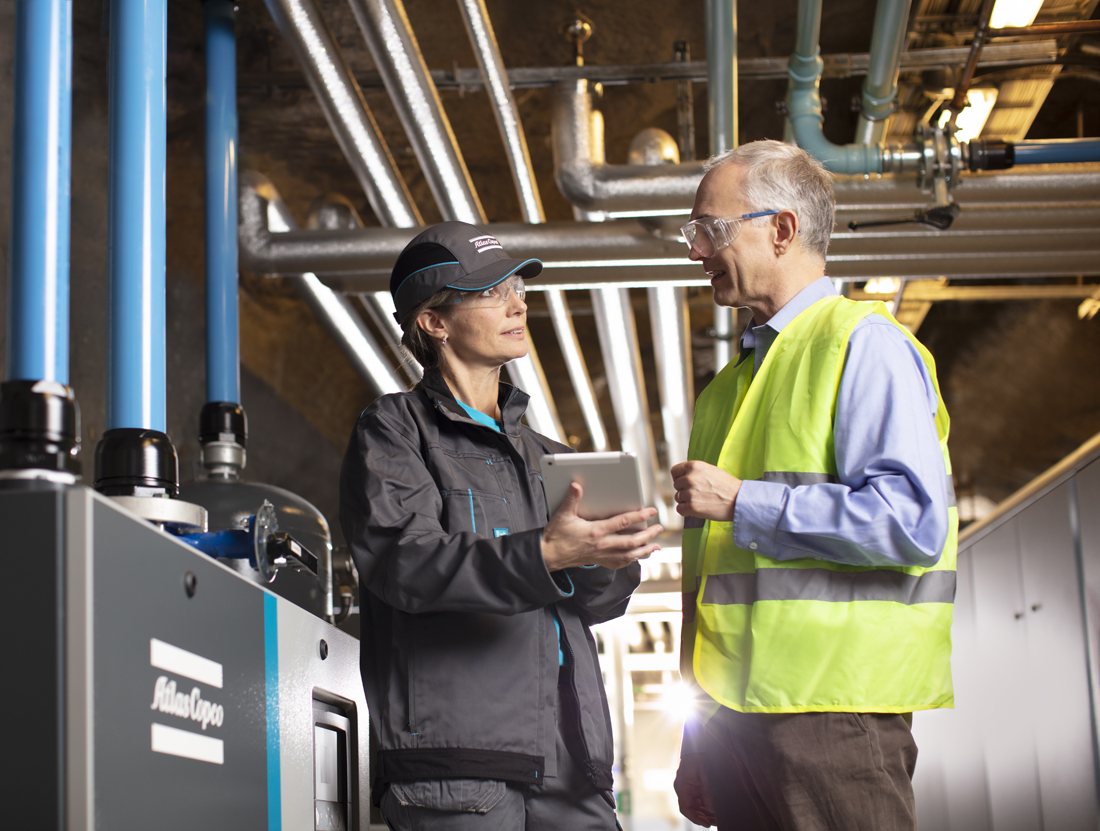
History of Atlas Copco
Few companies live to be 150 years. Those who do seem to share some traits, such as always working closely with their customers, always looking for a better way to do things and always keeping their promises. That’s at least what the Atlas Copco Group believes built its success in the past – and the heritage that it believes will help the company continue to turn great ideas into business-critical benefits, far into the future.
Today Atlas Copco is a company with expertise and services divided into four business areas – Compressor Technique, Vacuum Technique, Industrial Technique and Power Technique – to support customers in some 180 countries. When it was first founded in 1873, though, it was to make products for Sweden’s railways. Nothing more, nothing less.
The railway was of course a beacon of technological innovation for its time. It changed societies everywhere, and in few countries with such force as in the geographically extended Sweden. One person who saw the business upside of this was André Oscar Wallenberg, founder of Stockholms Enskilda Bank (today’s bank group SEB). He noticed, for instance, that the equipment used to build and maintain railway systems had to be imported, primarily from United Kingdom and Germany. Surely a Swedish-based company should be able to make those instead?
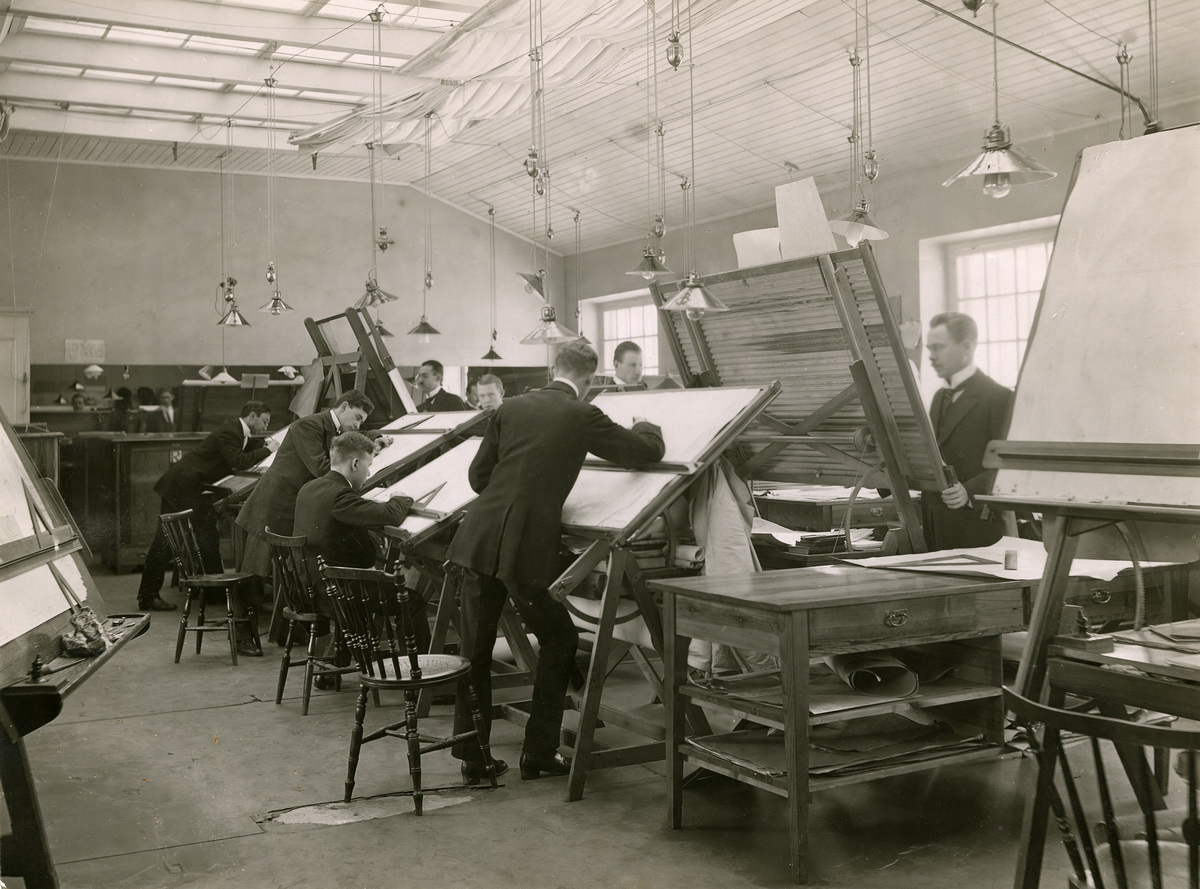
Wallenberg, together with three partners, founded a company to make railroad equipment. They named it Atlas, after the Titan in Greek mythology who carries the skies on his shoulders. Engineer Eduard Fränckel was put in charge – and he made sure that Atlas lived up to its somewhat daunting name. It was soon the largest engineering company in the country, with state-owned Swedish Rail as its key customer.
For a few years, all looked promising for the young company. However, a recession hit Sweden in the 1880s, bringing railroad construction to a halt and Atlas to its financial knees. Drastic measures were needed. Engineer Fränckel was succeeded by industrialist Oskar Lamm. New capital was injected from the Wallenberg family and the company changed its name to Nya Atlas (New Atlas). Production shifted to more advanced products, such as steam engines and boilers. In short, the company reacted and adapted to new times.

To make the new products, Atlas’ employees needed new types of tools. In the early 1890s, young Atlas engineer Gustaf Ryd went shopping. In England, he bought a pneumatic caulking hammer and, in the USA, a riveting hammer. An air pump, acquired in England, was another key product that the work crews in Sweden used in their new production.
It didn’t take Atlas’ engineers long to figure out how to build these new tools themselves. At first, they made them just for internal use. Soon, though, word of their efficiency spread, and Atlas started selling them externally. By 1901, a whole new business area had spawned from this, focused on making pneumatic and compressed air products. To this day, this is a core area for the company.
Atlas Diesel is formed
The Wallenberg family had other business interests than just railroads. In the late 1890s, they struck a deal with German engineer Rudolf Diesel, who had just invented the diesel engine. It gave them manufacturing rights for Sweden and they formed the company Diesels Motorer. The company ended up not just producing diesel engines, but also improving their design.
With Nya Atlas and AB Diesels Motorer sharing the same owner, and also collaborating at times, it was not strange that the companies merged in 1917 to become Atlas Diesel. The years during World War I had been good to both companies, with about 40 to 50% of their production going to export. It was two healthy companies that now joined forces. The new company moved into Diesels Motorer’s production plant in Sickla, just outside of Stockholm’s city borders. This is where the Atlas Copco Group still has its headquarters, or Group Center as it’s called.
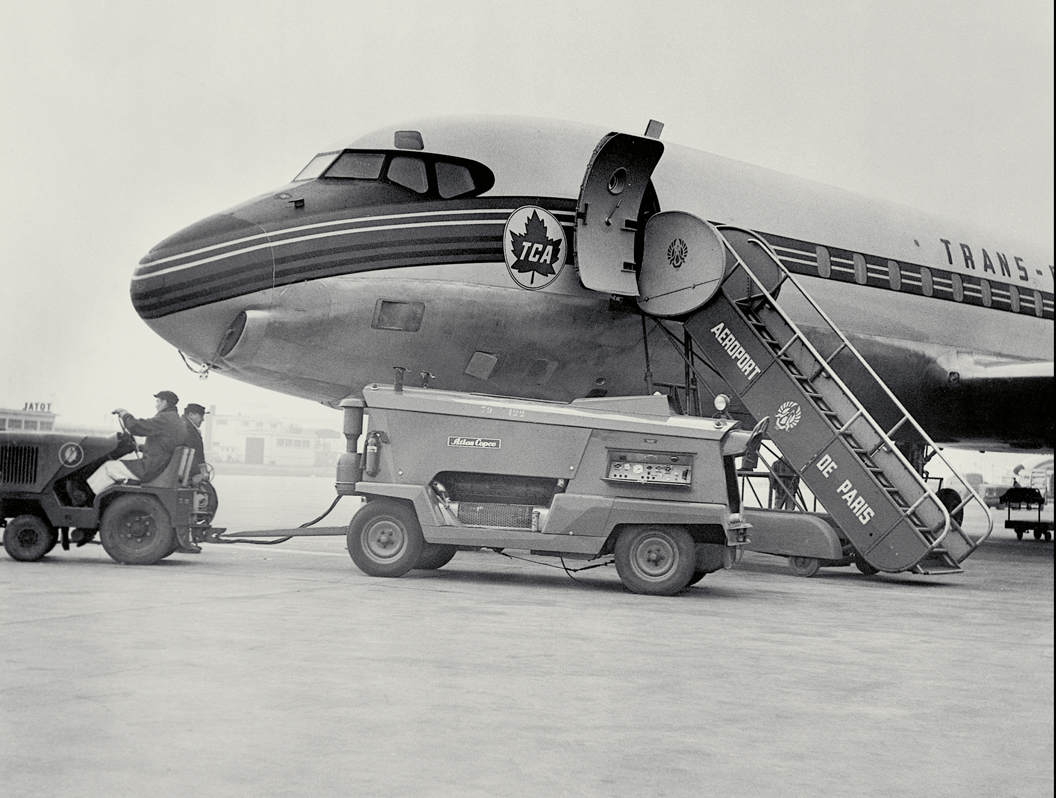
However, the interwar years brought protectionist and isolationist trends, topped with a global financial recession in the 1930s. These developments brought Atlas Diesel to the brink of bankruptcy – not just once, but twice. The Wallenbergs had to financially reconstruct the company both in 1925 and in 1934.
Through it all, the company’s pneumatics operations managed to keep their momentum. Making diesel engines, on the other hand, became less and less profitable. In 1948, Atlas Diesel stopped making diesel engines altogether. The company’s operations now focused on pneumatic tools, compressors, and drilling equipment.
Growth through acquisitions – and a new name
The postwar years proved successful for the company. Walther Wehtje, a previous department store manager, was now President and CEO and led the company in a more sales-focused direction. He didn’t neglect, though, to keep up the engineering expertise that was the company’s hallmark. One way to do this was to acquire other engineering companies, first domestically in Sweden, and then also abroad. The first strategically important international acquisition was the Belgian compressor company Arpic Engineering in 1956. This also led to most of the company’s compressor production moving to Belgium.
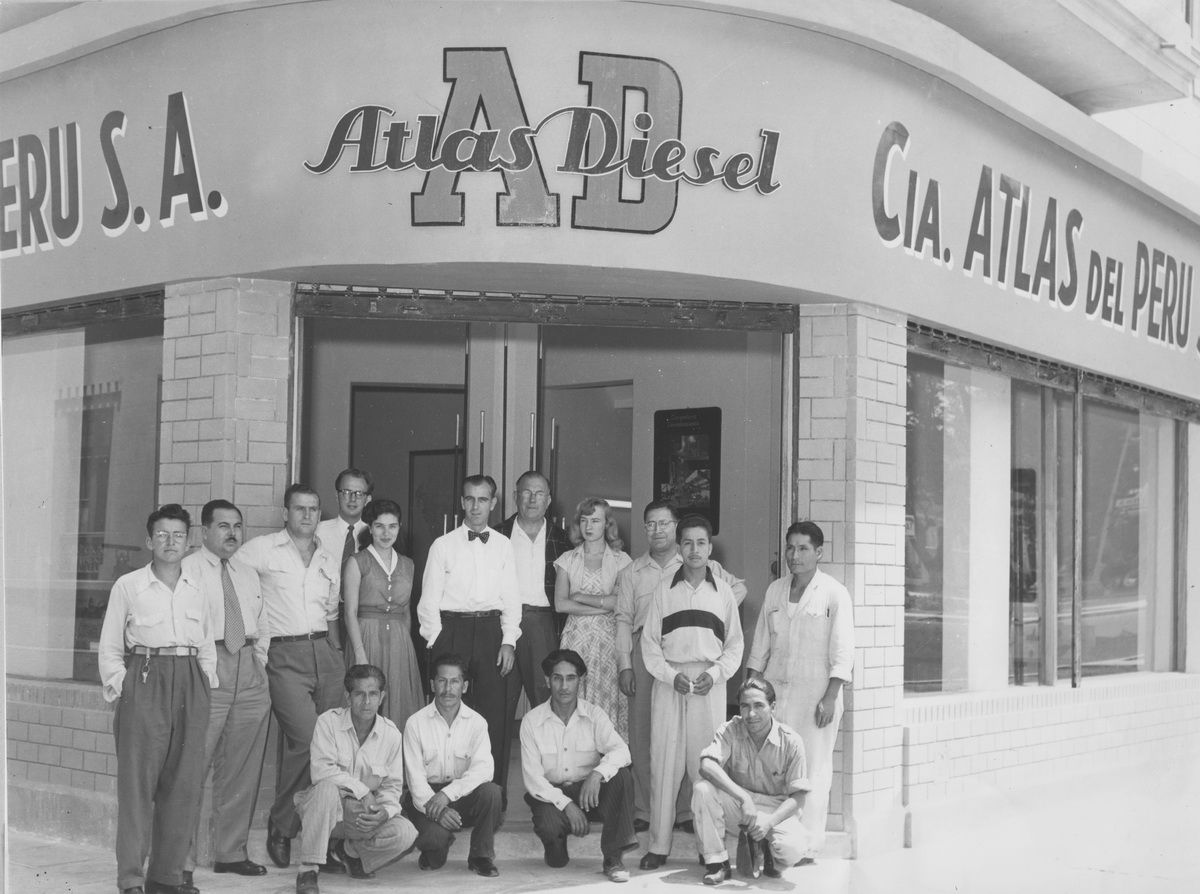
The name Atlas Diesel had by now clearly past its best-before date. So, on the heels of the Arpic acquisition, the company changed its name to Atlas Copco. It replaced “Diesel” with an acronym of a Belgian sales subsidiary in French, Compagnie Pneumatique Commerciale.
As Atlas Copco, the company continued to grow internationally, both through acquisitions and through inventive new processes. The so-called “Swedish method” for drilling, which allowed one man to operate a drilling machine where previously many were needed, brought the company global success during the 1950s. Another growth area was compressor technology, which the company and its customers kept finding new ways to use. Atlas Copco established factories and sales offices on continent after continent.
The oil crisis of the early 1970s and the following global recession of course meant restructuring and cutdowns in the company. At the same time, the crisis also opened up for strategic acquisitions. One such important purchase on the compressor side was French company Maugière. During the early 1980s, the company made several important acquisitions, among those Worthington Compressors.
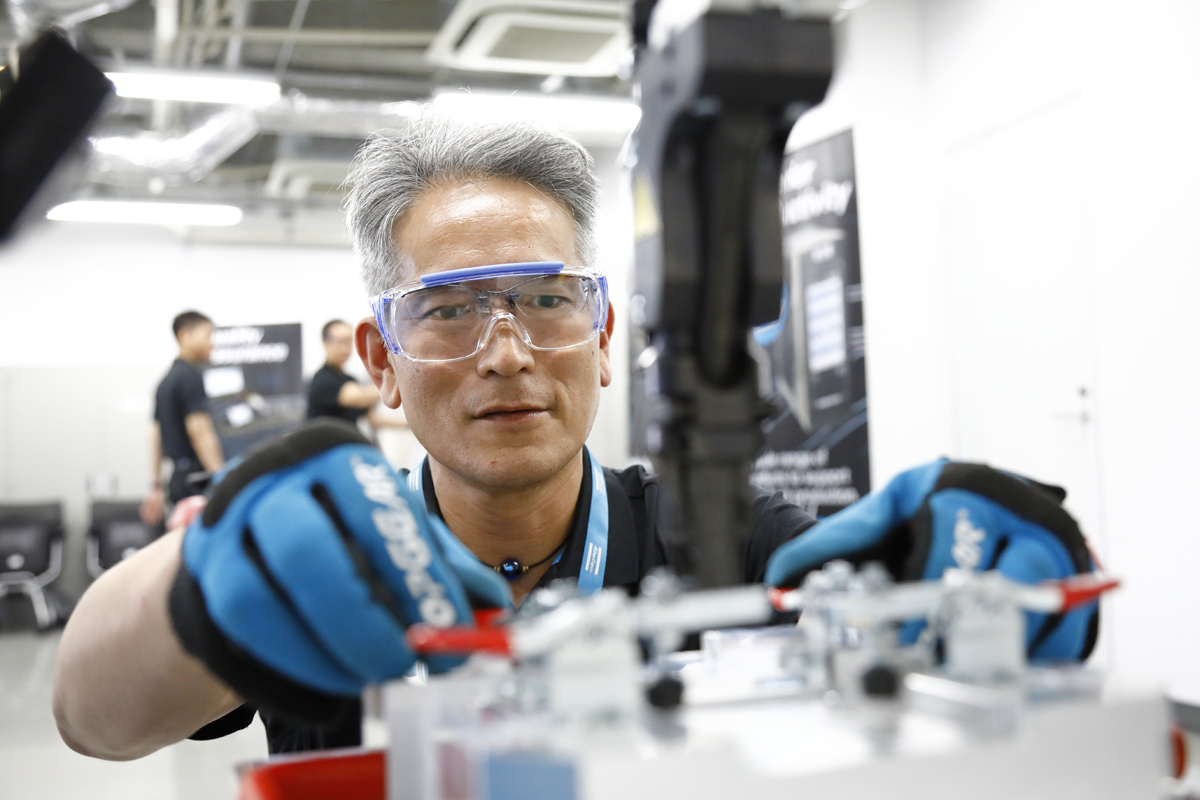
Overall, this was another period of growth for Atlas Copco, which made the company the world leader in both rock drilling and compressed air. There was still untapped potential, however, in the field of industrial tools. Some key acquisitions helped Atlas Copco break into the important American, French, and British markets. One such acquisition was Chicago Pneumatic Tools, which was strong within the American industry and among car workshops. It made Atlas Copco the world’s largest manufacturer of compressed air tools and assembly systems.
More acquisitions came during the following decades, such as Desoutter Brothers Plc (UK), AEG Elektrowerkzeuge (Germany), and American Milwaukee Electric Tool (USA). They allowed Atlas Copco to both broaden its offering and strengthen its positions in various geographical markets.
The new millennium saw continued mergers and acquisitions. Two new key members of the Group were Edwards (UK) and Leybold (Germany). They brought longstanding heritages of their own and allowed the Group to form an extensive business in vacuum technology. In 2017, vacuum became a new business area of its own.

In 2019, Atlas Copco acquired 18 companies. It was a record that was thought hard to beat, but in 2022, the company completed 30 acquisitions.
Atlas Copco around the world
Today’s Atlas Copco has operations on all continents except Antarctica. Its first non-Swedish operation was otherwise a sales office in 1913 in Russia, which at the time was an important business partner for many Swedish companies until the Russian Revolution. Instead it was in the United Kingdom that the company’s global expanstion started in 1919.
Its first African establishment was a sales office in Kenya in 1936, but it was in South Africa that the company began proper operations. As early as 1922, Atlas bought shares in Delfos, a drill bits and spare parts manufacturer, before eventually becoming sole owner.
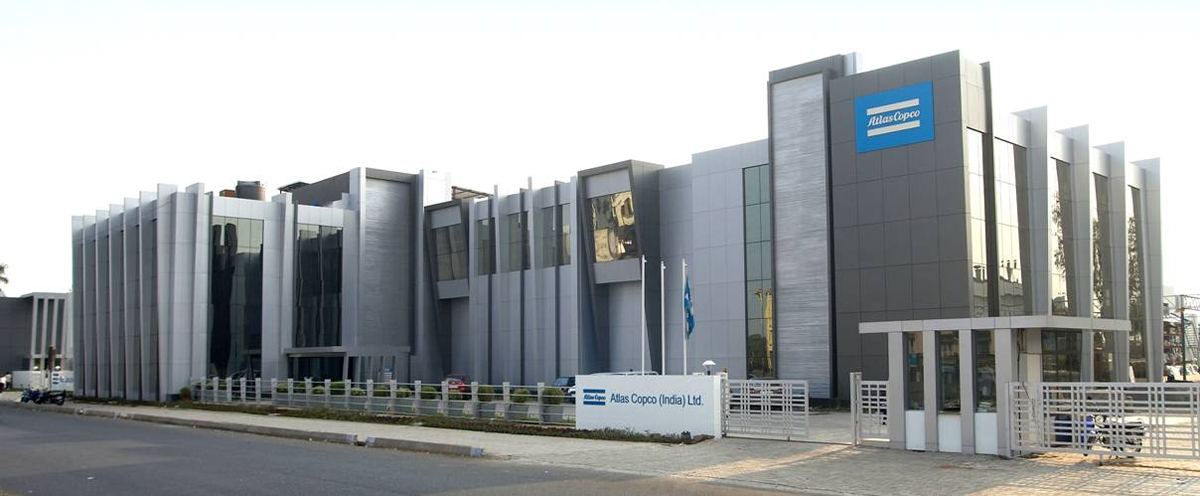
Across the Atlantic, Canada became the company’s gateway into North America. In 1948, it introduced the Swedish method of rock drilling there. The company managed to conquer half the market in just a couple of years during the 1950s.
In 1950, Atlas Copco established itself in Australia. The arguably oddest story to emerge from that market is about…a dinosaur. During digs in the 1980s, a number of bone fragments were found from several new and previously unknown species. Atlas Copco had lent equipment to the excavations and, as thanks, the paleontologist named one of the new species Atlascopcosaurus loadsi. (“Loadsi” after Bill Loads, Atlas Copco’s manager in Victoria who was personally involved in the project.)
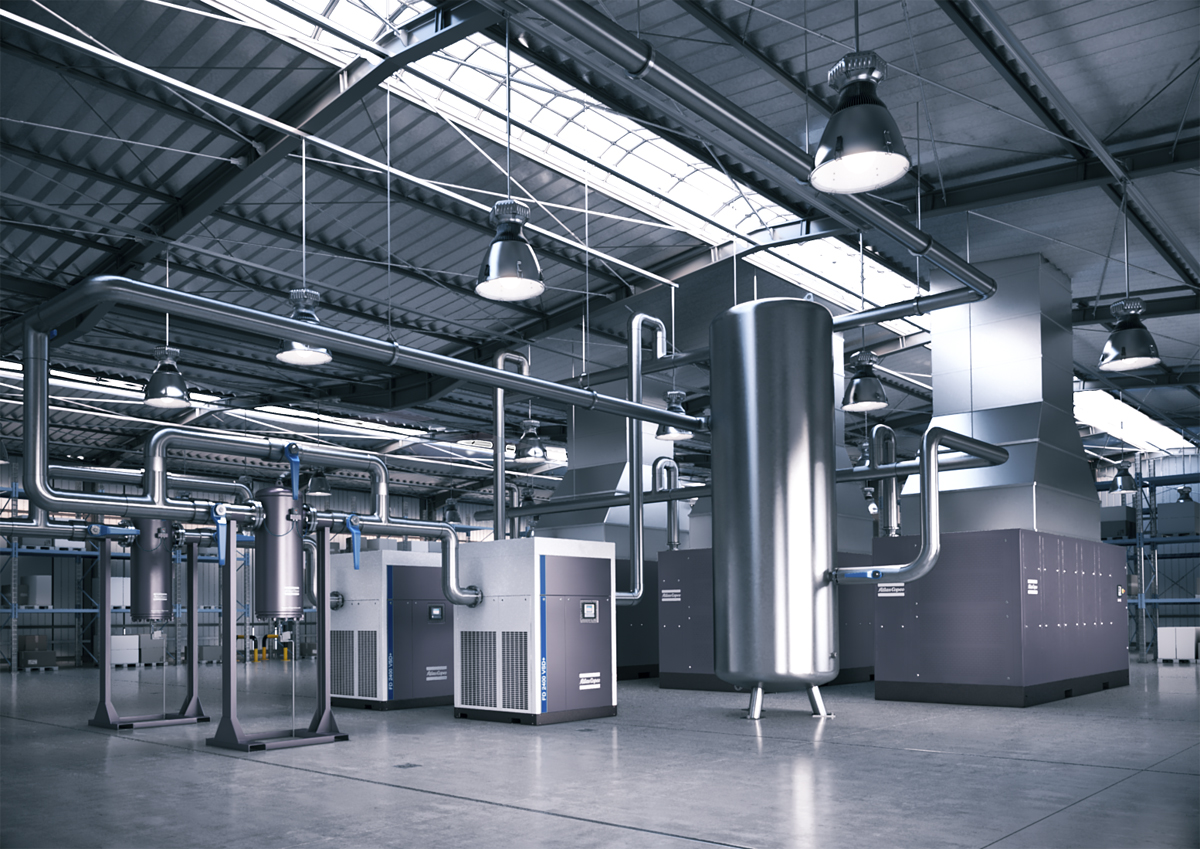
The first South American operation for Atlas Copco was a sales office in Peru in 1950. This was followed by Chile in 1954, Brazil in 1955, and Argentina in 1969. That year also saw the formation of the Andean Common Market (Ancom) between countries in the western parts of South America. Within Ancom, each country was assigned production of certain industrial products, which could then not be manufactured in any other Ancom country. Bolivia was given the manufacture of rock drilling machines and compressors – and chose Atlas Copco as its partner. In the spring of 1976, Atlas Copco Andina opened a completely new factory in the capital of La Paz. With its approximately 90 employees, it became one of the largest mechanical manufacturing industries in the country.
In 1960, Atlas Copco opened a sales office in India, after many years of selling through an agent. Two years later, it opened a newly built factory and soon became a significant supplier on the Indian market. When the Indian government passed a law in the 1970s mandating that all foreign companies must have majority Indian ownership, many international companies chose to leave the country. Atlas Copco remained, though, now with fellow Indian owners, following a company tradition of remaining in established markets to take care of existing customers.
China first saw Atlas Copco products back in the 1920s. It wasn’t until 1983, though, that the company signed its first license agreement, this with a compressor factory in Wuxi, west of Shanghai. Two years later, Atlas Copco opened its own representative office in Beijing. In March 1993, Atlas Copco entered its first joint venture with Nanjing Construction Machinery Plant to manufacture and sell drilling rigs.
China has become one of Atlas Copco’s largest markets for mid- to large-sized oil-free compressors. In 2022, Asia/Oceania accounted for 39%, the Americas for 29%, Europe for 27%, and Africa/Middle East for 5% of the Group’s revenue.
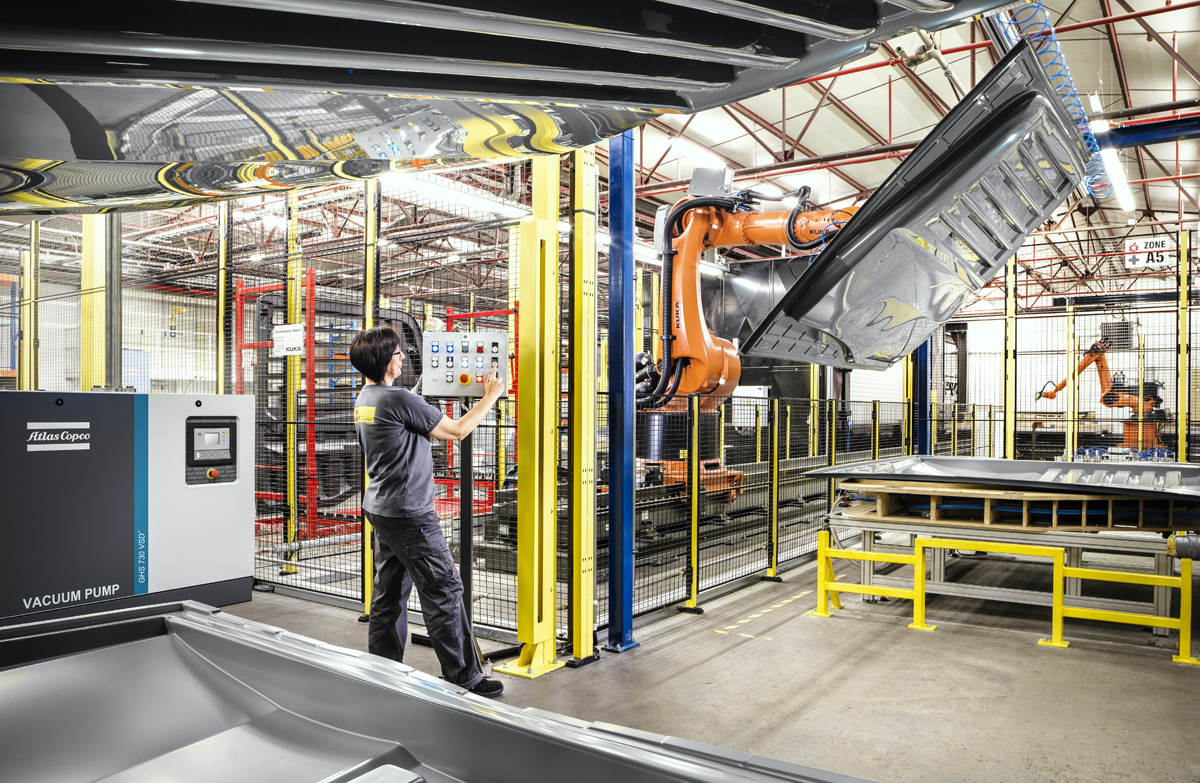
Getting ready for new times
Mining equipment was for many years a key part of the Atlas Copco Group’s portfolio. The company had begun already in 1905 to produce rock drills. It therefore came as somewhat of a surprise to many when Atlas Copco in 2018 spun out its mining equipment business into its own company. In essence, the company was split in two. The new company, Epiroc, has since then been a fully independent company, with its own stock listing.
It really should not have surprised anyone, though, that Atlas Copco, when industry dynamics changed, was unsentimental to legacy operations. The board explained how it believed that the mining-focused activities would thrive better in a standalone company, and how the remaining organization would benefit equally from an increased focus on industrial customers.
Again, the world had evolved, and the Atlas Copco Group changed with it. It was a decision just as resolute as when Atlas Diesel shut down its diesel engine operations after World War II or, for that matter, when Atlas in the early 1900s stopped making the railway cars that had built its initial fame.
History shows that only companies that regularly reinvent themselves will stay at the forefront of development. And get to be 150 years old – as a start.
Compressor Technique’s history
Compressors have been at the heart of the Atlas Copco Group’s success for over a century. The Group has succeeded in transforming compressor technology many times over by completely reimagining the way compressors are designed and how compressor R&D-teams work. This is now sparking yet another revolutionary shift with digital twin technology.
Atlas Copco first got into the compressor game in 1904 when it started making piston compressors in-house. Since then, it has played a major role in advancing compressor technology to meet new industry needs – a role that the Atlas Copco Group is intent on maintaining. Today, compressor technology at the company is being reimagined – once again – by the Antwerp-based team led by Guy Mareels, Vice President Engineering at the Oil-Free Air Division.
“Atlas Copco has repeatedly made breakthroughs in oil-free air ever since the first oil-free series in the 1960s,” says Guy, who joined the Atlas Copco Group 15 years ago, starting out as a calculation engineer running simulations. “We are now making another quantum leap in energy efficiency with a new generation of oil-free screw compressors. I spend much of my time in meeting rooms as I stimulate co-breeding across teams, but my favorite time of day is when I get out and see the machines. After all, I’m still an engineer at heart and enjoy helping the product teams stay on the right track.”
Opening up potential for new markets
Reinventing existing products is core to the Group’s operations. In the 1950s, Atlas Copco made two key moves that transformed its compressor business to meet new demands. The first was purchasing the rights to Swedish inventor Alf Lysholm’s screw compressor in 1954, a technology that greatly increased compressor capacity. The second was the acquisition of Arpic, a highly efficient Belgian compressor factory in 1956.
After designing the company’s first air-cooled portable compressor in 1952 in collaboration with engineer Karl-Erik Hilfing, Iwan Åkerman relocated to Antwerp in 1956 to head up R&D at Atlas Copco’s new base for compressor operations.
A decade later, in the 1960s, Atlas Copco became the first company in the world to present a transportable piston compressor supplying oil-free compressed air. A parallel breakthrough was the launch of a stationary oil-free compressor, the Z series. It was named Z because it felt like a development “at the end of the alphabet” as far as you could imagine innovation. The Z series made compressed air viable for new markets, including the textile, food, and medicine industries.
“Today, we are proud to be a leading force in the global energy transition, supporting emerging market trends in the shift away from fossil fuels,” Guy explains. “For instance, the electric car and battery industries rely heavily on large amounts of compressed air. Another emerging market is the maritime industry, where our low-pressure turbo and screw blowers can be used for hull lubrication to increase ship fuel efficiency. We also have a new generation of compressors rolling out to empower low-carbon utilities and are working on higher-pressure solutions for compressing hydrogen and CO2, which are poised to be a big wave of the energy transition.”
From VSD to VSD+ – a journey of energy-efficiency leadership
In the 1970s a company team set out to bring about the next phase in compressor technology. Their work initially led to making several compressor parts more energy efficient, especially motors. This laid the foundation for taking the promising variable speed drive (VSD) technology to new levels, making it even more efficient and also better adapted to customer needs.
Atlas Copco wasn’t the first company to introduce VSD technology. However, the Group played a major role in bringing it to market on a broad basis. The company’s VSD prototype was completed in the late 1980s and was launched on the market in 1994, rapidly becoming a bestseller and driving enormous energy savings. In 2000, the team working on VSD won the John Munck Award.
The John Munck Award is an annual award given every year since 1988 for the most innovative technical development during the year. Apart from innovative thinking, the product should also have proven commercial success and the project should have been well-managed. The award is named after one of Atlas Copco’s most successful engineers, John Munck, who worked for the Group between 1930 and 1970 as technical director, among other positions.
“VSD was a game changer,” says Guy, “and now we’ve recently leveled it up to VSD+ with two-stage compression. By powering each element with a separate motor, this further improves energy efficiency, performance, and uptime. Just as the original VSD was combined with motor efficiency improvements, we are now also introducing more efficient motor technology to go hand in hand with VSD+. The two types of new and improved VSD+ motors are the permanent magnet synchronous motor and the synchronous reluctance motor. At the Atlas Copco Group, energy efficiency has always been a strong focus and now we’re prioritizing it like never before to do our part to help our customers meet unprecedented sustainability and energy challenges.”
Reimagining the way engineers work with digital twin technology
During its 150 years, the Atlas Copco Group has reinvented itself many times, at both the Group and product levels. It went from rail to compressed air and diesel motors at the turn of the 1900s, and then transformed again from Atlas Diesel to Atlas Copco in the 1950s. More recent examples are the creation of the Vacuum Technique business area in 2017 following strategic acquisitions and the spin-off of the Group’s long-time mining equipment operations into Epiroc in 2018.
Building on that legacy, the company is now completely reimagining the way engineers work with compressor technology. With connected, advanced telemetry from compressors, and digital twin technology, Compressor Technique engineers can now see exactly how machinery is being used by customers out in the real world.
“I’m excited about all the gains we’re seeing from our digital twin deployment,” says Guy. “For instance, we can leverage the data to discover issues before the customer even notices them – something that was unthinkable five years ago. The digital twin data is also a highly valuable tool for identifying sales and service needs. Young engineers joining us now will probably wonder how it was ever possible to design products without all this data. This is only the beginning, too. Imagine the possibilities in the future when customers can connect their ecosystems to our digital twin and open a whole new world of data-driven compressed utility room operations.”